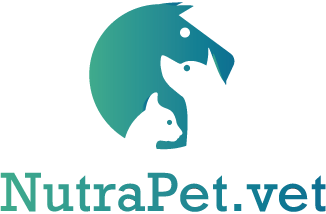Proton pump inhibitors (PPIs), such as omeprazole, are commonly given concurrently with nonsteroidal anti-inflammatory drugs (NSAIDs ) as prophylaxis to reduce the risk of gastrointestinal (GI) injury. However, the evidence supporting this practice is weak while, conversely, PPIs could exacerbate dysbiosis and inflammation.
Based on these premises, a group of U.S. researchers conducted a prospective sequential study of 6 healthy adult beagle dogs with the aim of evaluating the effect of administration of the NSAID carprofen, alone or in combination with omeprazole, on gastrointestinal permeability, inflammation, and dysbiosis index (DI).
NSAID injuries: different mechanisms for stomach and intestines
In fact, NSAIDs are commonly prescribed to dogs to treat pain and inflammation, often caused by osteoarthritis. The most commonly reported adverse effects are gastrointestinal signs such as vomiting and diarrhea, but more serious effects can also occur, including gastrointestinal ulcer and hemorrhage.
As demonstrated in humans, the pathophysiology of NSAID-induced intestinal injury is distinct from that of the stomach: in the latter, NSAIDs cause mucosal damage primarily by inhibition of cyclooxygenase, with reduction of protective prostaglandins.
In the intestine, however, bacteria are believed to play an important role, as evidenced by studies in which gnotobiotic rats developed Fans-induced intestinal ulceration only when colonized by commensal bacteria.
PPIs, therefore, prescribed prophylactically with NSAIDs in dogs may instead alter the intestinal microbiome by increasing susceptibility to enteropathy: in rats, they have been shown to induce intestinal dysbiosis and exacerbate NSAID-induced small bowel ulceration and bleeding.
Gut permeability and inflammation under the lens
In the U.S. study, which appeared in the Journal of Veterinary Medicine, gastrointestinal permeability and inflammation were assessed by assaying serum lipopolysaccharide (LPS) concentration, plasma iohexol concentration, fecal dysbiosis index (DI), and fecal calprotectin concentration in a 3-period prospective design.
In the first 7-day period, the dogs received no treatment (baseline). During the second period, which began after 1 day of rest, dogs received 4 mg/kg carprofen per os every 24 hours for 7 days. In the 3rd period, which began after a 4-week washout, dogs received 4 mg/kg oral carprofen every 24 hours and 1 mg/kg omeprazole per os every 12 hours for 7 days. All drugs were administered 30 minutes before the meal (normal diet with exclusive adult dog food).
Gastrointestinal permeability testing was performed at the end of each period. For each period, including basal, fresh feces were collected in the morning of days 5-7. On day 8, dogs, kept fasting, were given 2.0 ml/kg iohexol per os. Blood samples were collected hourly for 6 hours postadministration. On day 8 of each treatment, the serum concentration of lipopolysaccharide (LPS) was measured, and on the feces of days 5, 6 and 7, DI was assessed, as well as fecal concentrations of calprotectin.
It resulted in the following:
- there were no significant differences in serum LPS between treatments, and total plasma iohexol concentrations over time for each treatment showed significant differences in hours 1 to 6 regardless of the treatment received, suggesting that short-term co-administration of omeprazole and carprofen did not significantly increase intestinal permeability in these healthy dogs.
- Fecal DI varied significantly over time according to the treatment received
- fecal DI did not increase on any treatment day when dogs received carprofen alone or no treatment
- concomitant administration of omeprazole and carprofen significantly increased fecal calprotectin concentration and DI compared with baseline and carprofen alone
- fecal calprotectin concentrations differed significantly between treatments but did not vary over time. Post-hoc tests determined that concomitant administration of omeprazole and carprofen resulted in increased fecal calprotectin concentrations compared to baseline or carprofen alone. No differences were observed when carprofen was compared with basal.
Combination of carprofen and omeprazole increases dysbiosis
The increase in fecal DI when dogs were given carprofen and omeprazole suggests that the addition of omeprazole had a negative impact on the fecal microbiome, which, in turn, may have negative effects on intestinal health.
When individual bacterial taxa were considered,
- concomitant administration of carprofen and omeprazole resulted in significantly lower mean Turicibacter, Fusobacterium , and C. hiranonis abundances than both carprofen alone and basal. No differences were observed between carprofen alone and basal on any day
- concomitant administration of carprofen and omeprazole resulted in lower mean values of Faecalibacterium abundances than carprofen alone or at baseline. No difference was found between carprofen and basal on any day
- the results for Blautia varied over time according to the treatment received. On day 5, concomitant administration of carprofen and omeprazole differed from both carprofen alone and basal. On day 6, after adjusting for post-hoc tests, no differences were observed between concomitant administration of carprofen and omeprazole and baseline. However, carprofen alone differed between both basal and concomitant administration of carprofen and omeprazole. On day 7, all treatments differed and, as on day 5, concomitant administration of carprofen and omeprazole resulted in lower mean Blautia abundances than carprofen alone or at baseline.
- No differences were observed in time or between treatments for Streptococcus or E. coli .
Thus, the combination of carprofen and omeprazole affected 5 of the 7 key taxa evaluated, with a decrease in short-chain fatty acid (SCFA)-producing bacteria which, butyrate in particular, are essential for intestinal health, and decreased abundance of SCFA-producing bacteria in dog feces is associated with chronic enteropathy and acute diarrhea.
Adding omeprazole to the treatment also significantly reduced the abundance of C. hiranonis. Bacterium with high dehydroxylase capacity of bile acids. Secondary bile acid production is a key function of the microbiome. Lower concentrations of secondary bile acids are also believed to be a predisposing factor for C. difficile infections in humans. In dogs, the pathogenicity of C. difficile is less clear, but C. hiranonis can confer resistance to infection.
Markers of increased inflammation
In the study described here, administration of carprofen and omeprazole induced a significant increase, compared with baseline or carprofen alone, in fecal calprotectin concentrations, a noninvasive marker of intestinal inflammation in humans and dogs, suggesting that the addition of omeprazole plays an important role in the development of intestinal inflammation in dogs treated with carprofen.
The authors point out that “given the sequential design and the lack of an omeprazole-only treatment group whether carprofen plays a substantial role in inducing dysbiosis or inflammation when administered concomitantly with omeprazole cannot be determined. Based on previous studies in which omeprazole caused intestinal dysbiosis in dogs and the lack of dysbiosis or inflammation with carprofen alone in our study, we believe that omeprazole is the major factor in fecal dysbiosis and intestinal inflammation and, although further studies are needed, may result in the development of NSAID-induced enteropathy, as previously determined in other species.”
Although additional studies with a larger sample size, a group receiving omeprazole alone, and a longer treatment period in a population of dogs with additional risk factors for gastrointestinal injury and bleeding, such as older age and presence of comorbidities, are warranted, the study results lead one to believe that while omeprazole is the standard of care for suspected or documented NSAID-induced proximal gastric or duodenal bleeding, prophylaxis in healthy dogs receiving carprofen provides no benefit for intestinal health where it could cause intestinal inflammation and gut dysbiosis.
Reference
Jones SM, Gaier A, Enomoto H, et al. The effect of combined carprofen and omeprazole administration on gastrointestinal permeability and inflammation in dogs. J Vet Intern Med. 2020;34:1886–1893. https://doi.org/10.1111/jvim.15897












